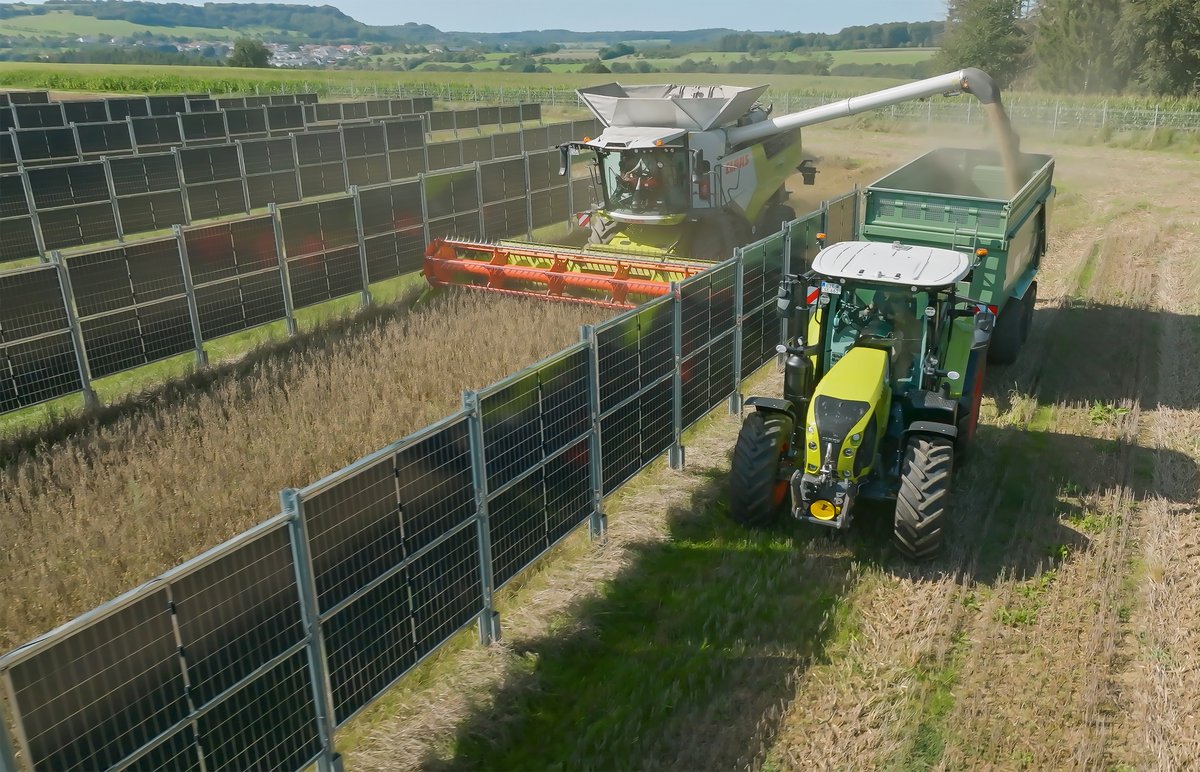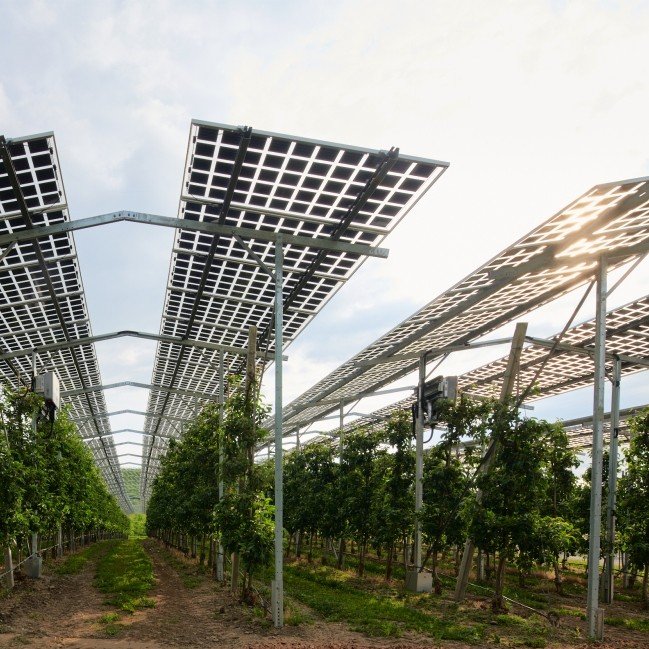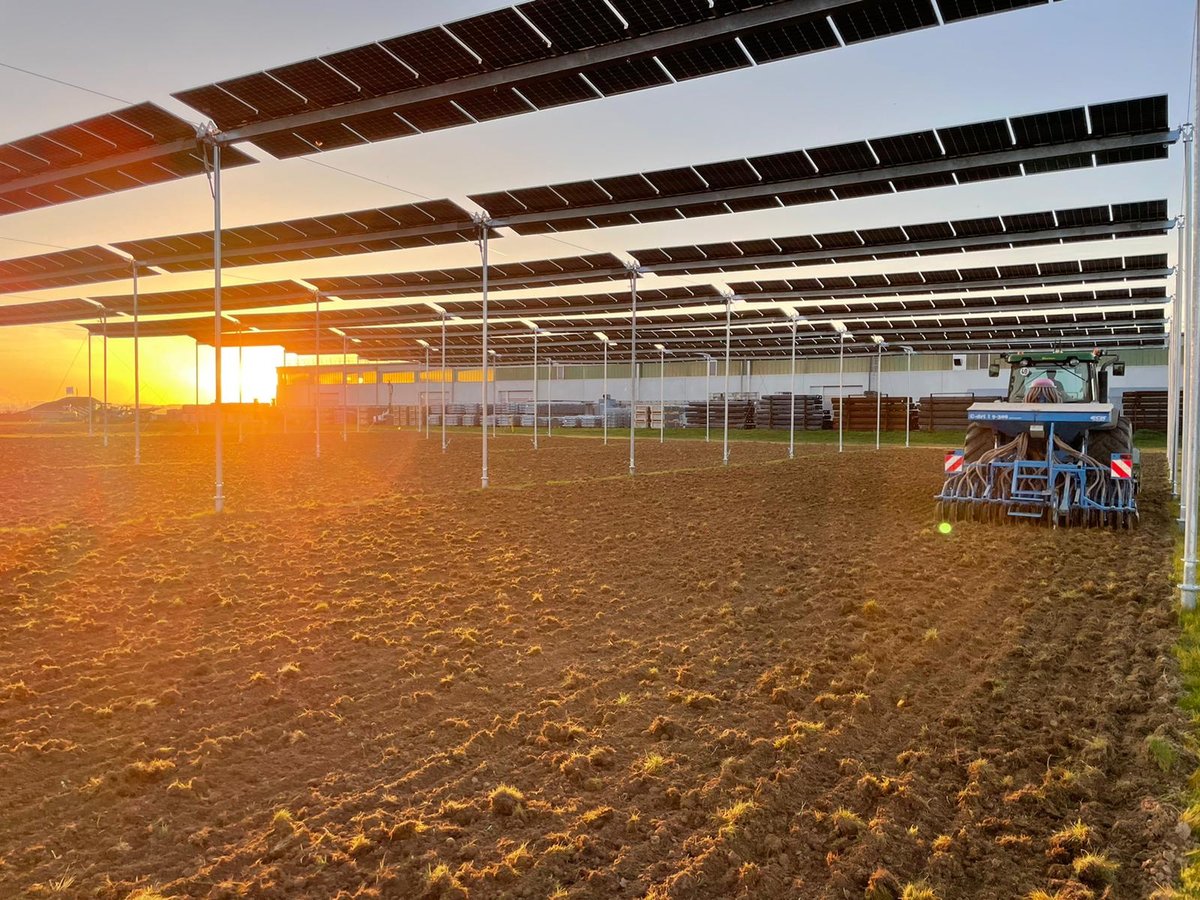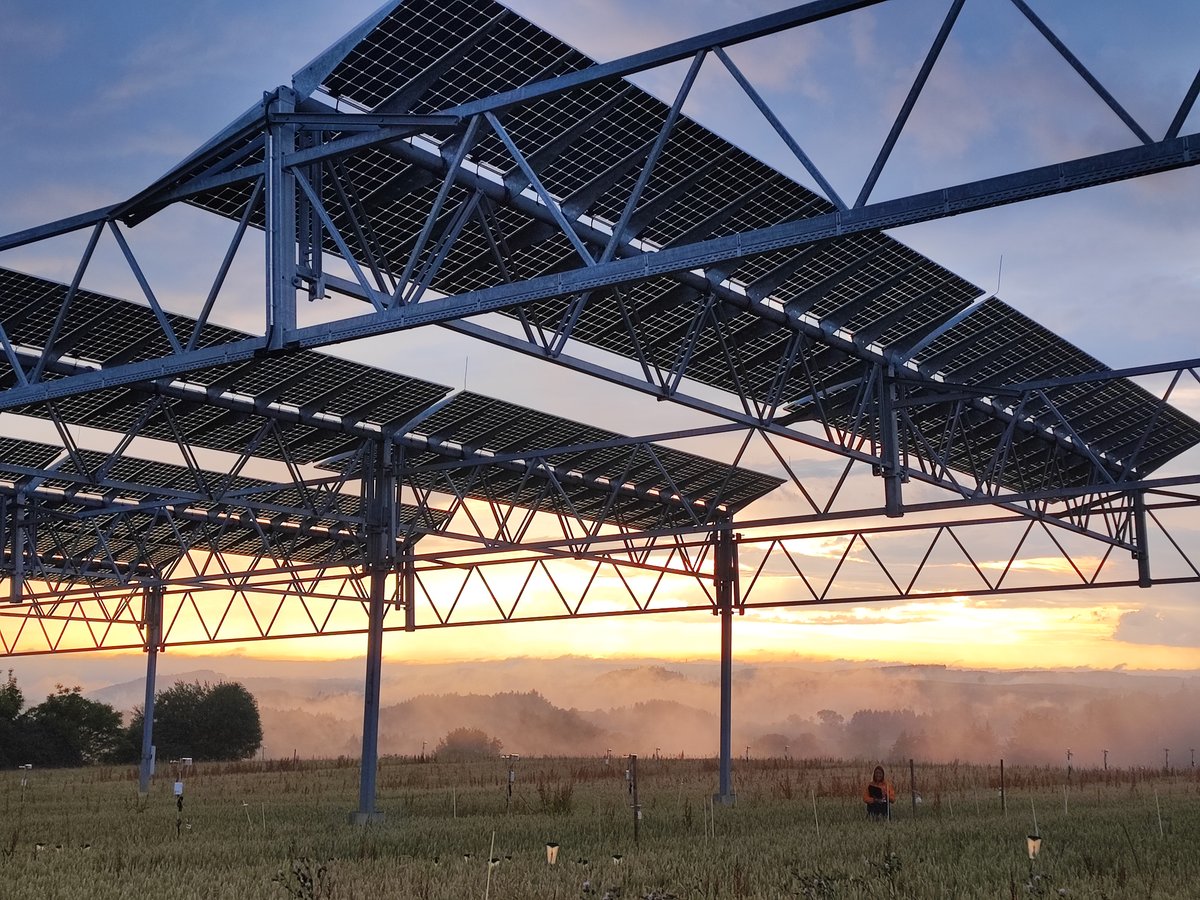An innovative variant of agrivoltaics that is becoming increasingly established is the vertical installation of bifacial photovoltaic modules.
These systems are installed between the cultivated areas and utilize the solar radiation from both sides. They create a favorable microclimate by reducing evaporation and thus increasing soil moisture by reducing wind speed and casting shadows. Economically, they are convincing due to their lower material costs and, thanks to their orientation, offer more even energy production throughout the day, which has a positive effect on grid stability.
You want to read more about vertical agrivoltaics? These projects examine the operation of vertical agrivoltaics:




